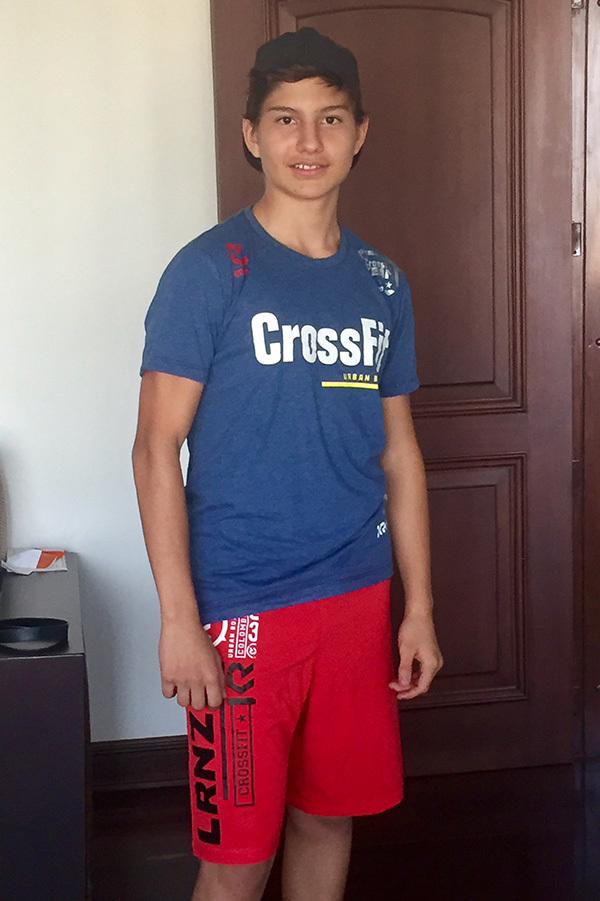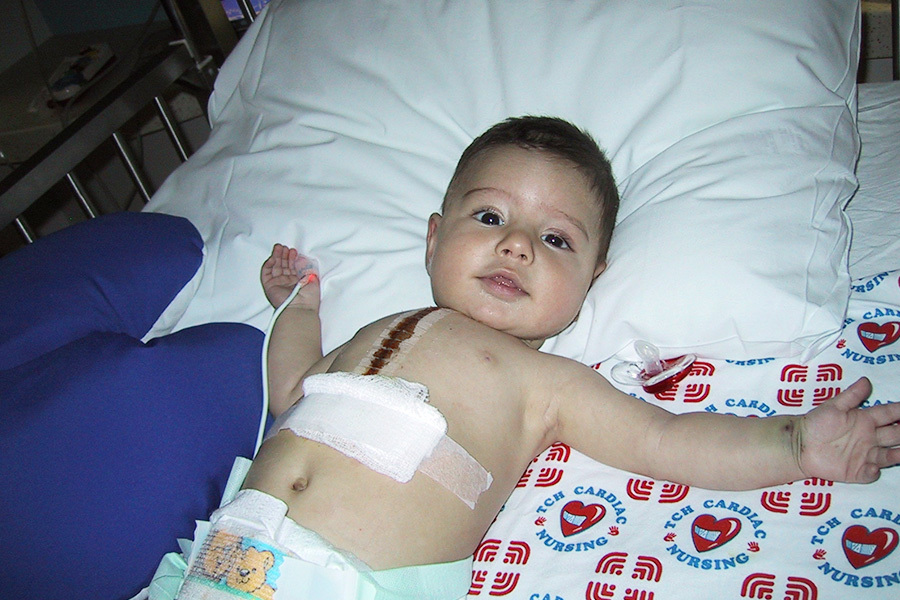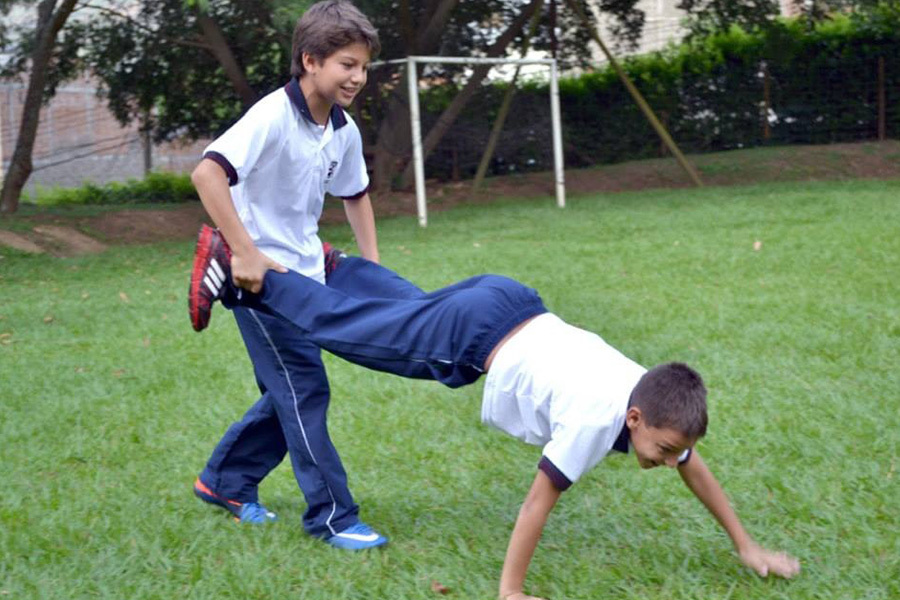Living Life Without Limitations
High school senior born with a rare medical condition and several congenital heart defects exceeds all expectations
Written by: Lauryn Gerard

Lorenzo Restrepo is an 18-year-old high school student wrapping up his senior year in Colombia, South America. You wouldn’t believe it from his involvement in school sports or his participation in CrossFit at his local gym, but Lorenzo was born with a rare and complex medical condition that resulted in multiple congenital heart defects. Despite his condition, the challenges it presents, and the limited healthcare and treatment options available to Lorenzo and his family in Colombia, Lorenzo has remained resilient and has continued to exceed all expectations since the day he was born.
Two weeks before Lorenzo’s mother, Juana Carvajal, gave birth in Bogota, Colombia in 2002, her doctors informed her that they observed several anatomical defects on ultrasound. Not until after Lorenzo was born were Juana’s doctors were able to understand the entirety of Lorenzo’s medical condition. Lorenzo was diagnosed with total situs inversus, a condition in which the arrangement of the internal organs is a mirror image of normal anatomy. For Lorenzo, this means his heart is not located in its usual position in the left chest but is located on the right, which is known as dextrocardia, or being “right-hearted.”

Total situs inversus with dextrocardia is extremely rare, affecting 0.01% of the population, or approximately 1 person in every 10,000 people. In 5-10% of total situs inversus cases, congenital heart defects are present. Lorenzo was born with several heart defects, including a ventricular septal defect, which is a hole in the ventricular septum, the wall that divides the two ventricles (lower chambers) in the heart. This defect allows oxygen-rich blood in the left ventricle to mix with the oxygen-poor blood in the right ventricle.
In addition to the ventricular septum defect, Lorenzo was also born with two small atrial septal defects, which occur when the septum that separates the left and right atria (upper chambers of the heart) does not close following development, leaving an opening and potentially allowing blood to leak between the two chambers. This also allows oxygen-rich blood and oxygen-poor blood to mix, which can affect how the heart and lungs develop.
One of Lorenzo’s rarer vascular anomalies includes the complete absence of the inferior vena cava, which is a large venous trunk that receives blood from the legs, the back, and the walls and contents of the abdomen and pelvis. The inferior vena cava is ultimately responsible for the transport of almost all deoxygenated blood from the abdomen and lower extremities and back to the right side of the heart for oxygenation. Without the inferior vena cava there is not adequate blood circulation and drainage of the lower limbs.
“Lorenzo has a very particular anatomy,” says Juana, “and after he was born, we were told about the severity of the situation and how he needed surgery to stay alive. Because we were in Colombia, the chances of him living through an operation were not high in 2003. We were told he had a 50% chance of survival if we did surgery in the city of Cali and only a 15% chance of survival if we did surgery in Bogota.”
Not satisfied with those odds, Juana began discussing her treatment options with friends and family and was connected with a family friend who at the time was a pediatrician at Texas Children’s Hospital in Houston, Texas, where she was able to get an appointment with the leading pediatric cardiology team. Unfortunately, their appointment was over six months away and the family was racing against the clock to ensure Lorenzo was able to continue to live.
“It was a very stressful time. Every doctor we went to reiterated how sick Lorenzo was and that he needed treatment right away, and we were stuck in this period where we were just trying to find someone who could provide care for him and do it quickly,” shares Juana. “You couldn’t tell just by looking at him. He was such a chubby, happy baby, so it was hard to face the truth. We managed to get our appointment at Texas Children’s moved up a few months and then we boarded a plane for Texas.”
Lorenzo and his family met with Charles Fraser, Jr., MD, board-certified congenital heart surgeon, who as of 2018, serves as the Chief of Pediatric and Congenital Heart Surgery for the Texas Center for Pediatric and Congenital Heart Disease, a clinical partnership between UT Health Austin and Dell Children’s Medical Center. He specializes in the surgical treatment of infants, children, and adults with congenital cardiac disease with emphasis on complex neonatal repairs of serious cardiac malformations.

During their first appointment, Lorenzo underwent a thorough echocardiogram during which the pediatric cardiology team explored and analyzed his unique anatomy to determine which treatment approach would work best to ensure positive, long-lasting outcomes for Lorenzo. Once their treatment plan was determined, the team felt extremely confident and decided that surgery could no longer wait. At just 4 months old, Lorenzo was scheduled for surgery.
Lorenzo underwent surgery without any issues, healed quickly during his short stay in Texas, and was able to return home to Colombia with his family once his heart was stable and began to strengthen.
“Dr. Fraser and his team were amazing! He gave me his cell phone number and even his wife’s cell phone number and told me to call in case something happened or if there was an emergency before as well as after his surgery,” Juana says of the experience. “You never get that type of care from doctors, and we were so surprised by the amount of support we had. We were truly grateful.”
Despite numerous cardiologists, pediatricians, and other physicians warning that Lorenzo would likely live a life with limited physical activity due to the potential fragility of his heart, Lorenzo has grown strong and each year his doctors are amazed at how resilient his heart and body have become.

“Each year, we meet with cardiologists and every time, they are amazed by Lorenzo’s ongoing development and how he continues to exceed all expectations. While pediatric cardiology and heart surgery has advanced significantly in Colombia since 2003, Dr. Fraser performed the surgery so well that Lorenzo has not needed any additional procedures since the one he had when he was a baby. He has lived a normal childhood without limitations,” says Juana.
Lorenzo and his family keep Dr. Fraser up to date on Lorenzo’s progress and can never express their gratitude enough for the way he and his team treated their family and for giving Lorenzo a fighting chance at a normal, healthy life. Lorenzo has big plans for his future and is thankful to have the opportunity to follow his dreams without limitation.
“I am very grateful,” says Lorenzo, “I have abilities that many other kids with my condition may not necessarily have. I think my condition makes me unique and it has sparked my interest in medicine. I’d like to attend college after I graduate and hopefully one day I will apply to medical school to become a doctor.”
To learn more about the Texas Center for Pediatric and Congenital Heart Disease, visit here.